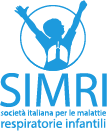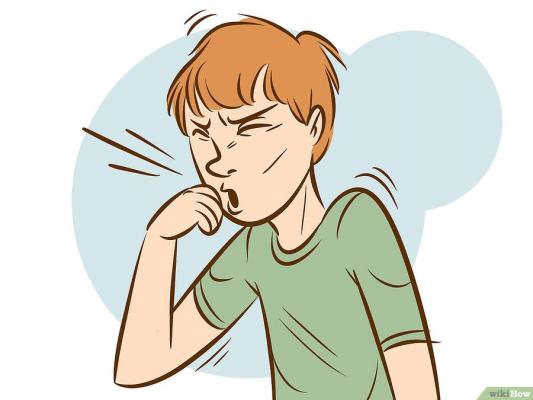Autor:
Antonella Gambadauro, MD; UOC Pediatria, Dipartimento di Patologia Umana dell’Adulto e dell’Età evolutiva “Gaetano Barresi”, Università degli Studi di Messina, Messina, Italia;
Sara Manti, MD, PhD; UOC Pediatria, Dipartimento di Patologia Umana dell’Adulto e dell’Età evolutiva “Gaetano Barresi”, Università degli Studi di Messina, Messina, Italia
Coughing is a reflex aimed to protect and clear the upper and lower airways from secretions, harmful substances, microorganisms and accidentally inhaled foreign bodies. The cough reflex consists of three phases:
- The inspiratory phase, requested to generate an effective air volume.
- The compressive phase, characterized by the sudden closure of the glottis and contraction of the chest wall, diaphragm, and abdominal muscles, increasing intrathoracic pressure.
- The expulsive phase, marked by the glottis opening, allowing high-velocity airflow and producing the typical cough sound.
Causes and role of cough. Airway defense
Coughing is a physiological defense in both children and adults, protecting the airways from harmful agents. Healthy children cough about 11 times a day (ranging from 1 to 34 times a day, or 35-72 times a year). The reflex is triggered by the stimulation of cough receptors located in several intrathoracic and extrathoracic areas (ear, sinuses, nose, larynx, trachea, bronchi, pleura, pericardium, esophagus, and stomach). The triggering stimulus activates receptors, which send signals via the vagus nerve to the cough center in the medulla oblongata. The signal is integrated with information from the cerebral cortex, hypothalamus, and cerebellum, then transmitted to the larynx, trachea, and bronchial bifurcation via the vagus nerve (larynx, trachea, and bronchial bifurcation); to thoracic muscles via spinal motor neurons, and to diaphragm via phrenic nerve. Thus, due to the dense innervation, any harmless or harmful stimulus can cause coughing. Common causes of cough include upper airway infections, exposure to outdoor (smog) and indoor (tobacco smoke) pollution, allergens, and cold and/or dry air. Less common causes include lower respiratory infections, asthma, and gastroesophageal reflux disease.
Cough and respiratory infections
Cough is a common vector for many pathogens causing infections, including bronchiolitis, influenza syndrome, Coronavirus disease-19 (COVID-19), and tuberculosis (TB). These infections spread through droplets expelled into the air via coughing. The droplets can contaminate nearby surfaces (toys, environments, hands, or parts of an infected person’s body). Children frequently touch their mouths, noses, or eyes, which makes it easier for pathogens to be transmitted.
How to limit the spread of pathogens from coughing
To limit the spread of infectious diseases via coughing, it is suggested to:
- Cover the mouth and nose with a tissue or the inside of the elbow when coughing.
- Remove used tissues from the rubbish.
- Wear a facemask if coughing or showing flu-like symptoms.
- Wash hands frequently for at least 20 seconds with soap and water, or use alcohol-based hand sanitizers if soap is unavailable.
- Avoid close contact with people experiencing flu or cold symptoms.
Cough in children: often benign and self-limiting
Cough is usually benign and self-limiting, resolving in half of all cases within 10 days (average: 14 days). Warning signs are productive cough, dry or hacking cough, night-time cough, barking or metallic cough, associated breathing difficulties and/or fever and/or vomiting.
Vomiting and cough in children
In pertussis (whooping cough), intense coughing may lead to vomiting. This association requires prompt medical attention, especially if followed by a characteristic “whooping” sound during inhalation. Young children may also vomit from coughing triggered by excessive mucus.
Persistent cough in children
Cough is classified by duration:
- Acute cough: <4 weeks
- Chronic cough: >4 weeks (daily)
Acute cough is usually caused by viral upper respiratory infections and typically resolves in 14 days. Associated symptoms may include nasal congestion, runny nose, sore throat, and postnasal drip. Other causes for cough are exposure to irritants (e.g., tobacco smoke), croup (barking cough, stridor, possible breathing difficulty), foreign body aspiration (sudden coughing, choking, respiratory distress), and asthma exacerbation. Rarely, acute cough may suggest lower respiratory infections (e.g., pneumonia).
Common causes of chronic cough include:
- In children <1 year: upper airway cough syndrome (postnasal drip), wheezing, post-infectious cough.
- In children >5 years: pneumonia, postnasal drip, prolonged bacterial bronchitis, wheezing.
- Ages 5-16: infections and asthma.
- Gastroesophageal reflux disease (GERD) affects all age groups, especially those with neurological or gastrointestinal comorbidities.
- Somatic cough syndrome (typically after age 6) is an exclusion diagnosis.
Clinical evaluation of cough in children
A thorough clinical evaluation and appropriate diagnostic work-up are essential to determine the cause of the cough and guide treatment. In some cases, rare or serious diseases must be ruled out (e.g., cystic fibrosis, primary ciliary dyskinesia, bronchiectasis, vascular rings).
Symptoms to watch for and report to your doctor include:
- Chest pain onset
- Persistent daily productive cough or blood-streaked sputum (hemoptysis)
- Unusual cough sounds (e.g., barking, stridor)
- Bluish discoloration of lips or extremities (cyanosis)
- Increased respiratory effort
- Rapid breathing
- Nasal flaring
- Chest or abdominal retractions
Also report:
- History of recurrent pneumonia
- Contact with infected individuals
- Loss of appetite and weight
- Poor growth
- Fever and its pattern
- Pre-existing health conditions (e.g., immunodeficiencies, heart disease, thoracic malformations, neurodevelopmental disorders)
How to relieve cough in children: medications and home remedies
Although acute cough is often benign and self-limiting, over-the-counter symptomatic treatments are widely used.
Less Effective Medications
Antihistamines and analgesics (e.g., paracetamol) have shown limited effectiveness and potential side effects when compared to placebo.
More Effective Medications
Levodropropizine is a non-central cough suppressant effective for short-term use in children over 2 years with acute dry cough. Mucolytics (e.g., acetylcysteine, carbocysteine, bromhexine) could be used for a short-term course in productive cough due to their ability to fluidize secretions. Note: Italian Drug Agency (AIFA) contraindicates their use in children under 2 years of age due to the risk of bronchial obstruction.
Effective home remedies: honey
Honey has anti-tussive, anti-inflammatory, antioxidant, and antibacterial properties. It is especially helpful for cough caused by upper respiratory tract infections. Do not use honey in children under 1 year of age due to the risk of botulism.
Other helpful measures:
- Let the child sleep with the head slightly elevated
- Increase fluid intake
- Keep room temperature at \~19–20°C and ensure adequate humidity
- Avoid home smoking and eliminate exposure to second- and third-hand smoke
- Seek medical advice in case of red flags, loss of appetite, or persistent fever and cough.
Conclusions
- Cough is a physiological reflex that helps to expel foreign substances; it is not always a sign of disease.
- Acute cough (<4 weeks) is often due to viral upper respiratory infections and typically resolves within 14 days.
- Be alert to red flags: breathing difficulty, cyanosis, haemoptysis, appetite loss, and chest pain, all of which require prompt medical evaluation.
- Chronic cough (>4 weeks) can result from common (postnasal drip) to rare (e.g., cystic fibrosis) affections and it should be always investigated.
- Over-the-counter medications are often costly and ineffective: Talk to your doctor before administering them to your child.
- Hygiene practices (e.g., facemasks, handwashing) during coughs and colds can help reduce infection spread.
References:
1. Marseglia GL, Manti S, Chiappini E, Brambilla I, Caffarelli C, Calvani M, Cardinale F, Cravidi C, Duse M, Martelli A, Minasi D, Miraglia Del Giudice M, Pajno G, Peroni DG, Tosca MA, Licari A, Ciprandi G. Acute cough in children and adolescents: A systematic review and a practical algorithm by the Italian Society of Pediatric Allergy and Immunology. Allergol Immunopathol (Madr). 2021 Mar 1;49(2):155-169. doi: 10.15586/aei.v49i2.45. eCollection 2021.
2. Marseglia GL, Manti S, Chiappini E, Brambilla I, Caffarelli C, Calvani M, Cardinale F, Cravidi C, Duse M, Martelli A, Minasi D, Miraglia Del Giudice M, Pajno G, Peroni DG, Tosca MA, Licari A, Ciprandi G. Chronic cough in childhood: A systematic review for practical guidance by the Italian Society of Pediatric Allergy and Immunology. Allergol Immunopathol (Madr). 2021 Mar 1;49(2):133-154. doi: 10.15586/aei.v49i2.44. eCollection 2021.
3. Bansal M, French CT, Irwin RS, Micklewright S, Szymonik K. Cough in Adults. Am J Respir Crit Care Med Vol. 194, P15-P16, 2016. Online version updated July 2022. ATS Patient Education Series © 2016 American Thoracic Society. Available online : https://www.thoracic.org/patients/patient-resources/resources/cough.pdf
No metadata found.



